Grow Lion's Mane Mushrooms at Home: Ultimate Guide to Growing
Posted by Troy Cosky, Founder FunGuy Grow Supply on 12th Jun 2023
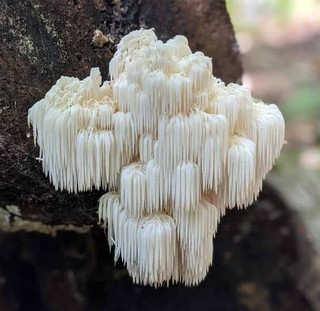
The Ultimate Guide to Cultivating Lion's Mane Mushrooms at Home
You've heard the whispers in the gourmet food world about a mushroom that resembles a lion's mane and is touted as a superfood. Now, imagine being able to grow this mushroom right at home. Yes, we're talking about Lion's Mane Mushroom - one of the most prized edible fungi that has been used for centuries in traditional medicines for its potential health benefits.
Growing Lion's Mane Mushrooms at home can seem daunting, but with the right guidance and knowledge, you can unleash your inner mycologist and cultivate this delicious delicacy with ease. In this ultimate guide, we'll take you through everything you need to know about growing Lion's Mane Mushroom – from understanding its species description and ideal growing conditions to substrate selection, maintaining fruiting conditions, harvesting, cooking, and enjoying it.
So buckle up and get ready to embark on an exciting journey of cultivating your very own Lion's Mane Mushroom!
Key Takeaways

- Lion's Mane mushrooms are a superfood with potential health benefits that can be grown at home.
- The ideal growing conditions for Lion's Mane mushrooms include a cool, humid atmosphere with a slightly acidic substrate and adequate ventilation and humidity control.
- Proper substrate selection, moisture control, and harvesting techniques are essential to healthy growth and successful cultivation.
- Growing Lion's Mane mushrooms at home offers many benefits, including cost-effectiveness, year-round harvests, and control over quality and purity.
Introduction: The Allure of Growing Lion's Mane Mushroom at Home
Growing Lion's Mane at home isn't just a fun hobby, it's a chance to discover the unique health benefits of this superfood mushroom. Among the various edible mushrooms, Lion's Mane stands out for its shaggy, white strands and flavor often likened to seafood. It has potential cognitive and nerve-enhancing properties that make it more than just a mushroom—it's also a natural way to boost your brainpower.
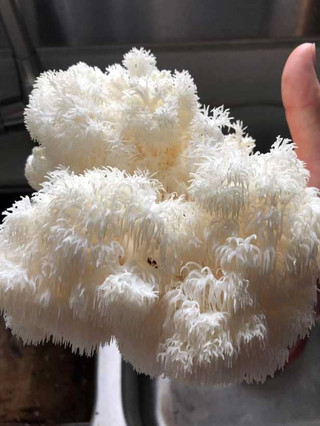
Cultivating Lion's Mane is becoming increasingly popular among nature enthusiasts because of its distinct appearance and remarkable health benefits. By growing this mushroom at home, you'll have access to fresh produce all year round and can enjoy the satisfaction of being self-sufficient. Plus, you'll get to experience the joy of watching your own food grow right before your eyes.
If you're new to mushroom cultivation, don't worry—growing Lion's Mane isn't as difficult as it may seem. With proper care and attention, anyone can learn how to cultivate these fascinating fungi in their home garden or indoor space. Just follow our step-by-step guide on growing lion's mane mushrooms at home, and you'll be well on your way to enjoying this superfood in no time.
Understanding the lion's mane mushroom is crucial for successful cultivation. Species description and ideal growing conditions are important to consider. This variety takes on different forms depending on where it grows naturally; however, its characteristic shaggy appearance remains consistent across all types. To thrive in artificial environments like homes or gardens, they require specific temperature ranges between 60-75°F (15-24°C) with humidity levels around 85%.
Understanding the Lion's Mane Mushroom: Species Description and Ideal Growing Conditions
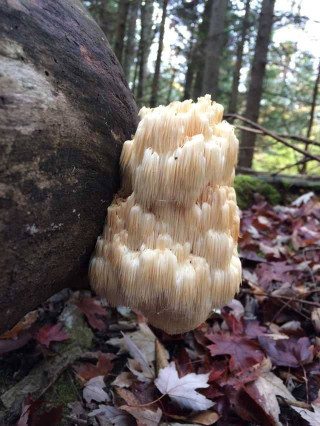
Get captivated by the unique appearance of the Hericium erinaceus mushroom and discover its ideal growing conditions for a successful harvest. To grow Lion's Mane mushrooms at home, it's important to understand their species description and ideal growing conditions. Here are some key points to keep in mind:
- Lion's Mane mushrooms are native to Asia, Europe, and North America, and they're known for their cascading icicle-like spines.
- These mushrooms grow naturally on dead or dying hardwood trees, but they can also be grown at home with care.
- The ideal growing conditions for Lion's Mane mushrooms include a cool, humid atmosphere with a slightly acidic substrate.
To replicate the natural habitat of Lion's Mane mushrooms in your own home, you should consider the following:
- Choose a substrate that's suitable for Lions Mane growth. Popular choices include sawdust or straw-based substrates.
- Adjust the pH level of your substrate to be slightly acidic (around 5.0 - 6.0).
- Provide adequate ventilation and humidity control in your growing area to ensure a stable environment for your Lion's Mane mycelium.
Understanding these basic concepts about Lions Mane cultivation will help you set up an optimal environment for healthy mushroom growth. With careful attention paid to these details, you can create an environment that allows your mycelium to thrive and produce bountiful fruiting bodies.
Now that you have a grasp on the ideal growing conditions for Lion's Mane mushrooms, it's time to dive deeper into how to cultivate them indoors.
Getting Started: Indoor Lion's Mane Cultivation
To start cultivating Lion's Mane indoors, all you need are some basic materials and a little bit of patience. Here's how to begin growing Lion's Mane mushrooms:

- Sterilize your substrate: The first step is to sterilize your sawdust blocks or hardwood pellets using a pressure cooker or autoclave. This ensures that the substrate will be free from any contaminants that could harm your mushroom growth.
- Inoculate the substrate: Once sterilized, add bran substrate and mix well with your sawdust blocks or hardwood pellets inside a large pot. Next, introduce Lion's Mane spawn to the sterilized substrate and mix it thoroughly.
- Provide ideal conditions: After inoculating, place the pot in an area with proper temperature (around 18-23°C) and high humidity (around 75-85%). You can use a humidifier or mist spray bottle to maintain the right environment for optimal growth.
- Wait for fruiting: The inoculation process usually takes around two to three weeks before the fruiting phase occurs. When you see small white bumps on the surface of your substrate, it means that mushrooms are about to grow! Keep providing ideal conditions until they reach maturity.
With these steps in mind, you can successfully grow Lion's Mane mushrooms at home! Remember that indoor lion's mane cultivation requires careful attention and maintenance throughout its growth cycle.
Transition into outdoor lion's mane cultivation: Unleash your inner mushroom grower by taking on outdoor lion's mane cultivation!
Outdoor Lion's Mane Log Cultivation: Unleashing the Mushroom Grower in You
Embracing the great outdoors can lead to a rewarding experience, as outdoor cultivation of Lion's Mane mushrooms takes longer but yields more. If you're wondering how to grow Lion's Mane mushrooms at home, outdoor Lion's Mane cultivation is a fantastic option.
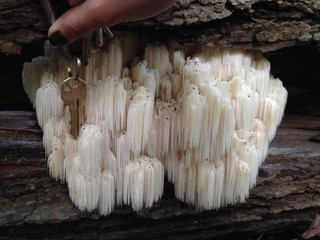
To get started, select healthy hardwood logs and inoculate them with Lion's Mane spawn plugs. Careful inoculation and sealing with wax are critical steps in this process. According to a study conducted by the University of Minnesota, logs inoculated with Lion's Mane spawn plugs can produce up to 2 pounds of mushrooms over their fruiting period.
Patience is key when it comes to outdoor cultivation; after 12-18 months of regular watering, you can expect your mushroom logs to fruit. Outdoor cultivation requires more hands-on effort than indoor growing since the mycelium needs protection from pests like slugs and snails that feed on it.
When selecting substrate for Lions Mane, hardwood is the best choice since its lignin content makes it an excellent source of nutrition for the fungus. Oak and maple are popular choices because they provide high-quality wood that is both durable and resistant to decay.
Once you have selected your substrate, maintaining ideal fruiting conditions becomes crucial; this includes providing proper ventilation and humidity levels for optimal growth. By following these steps carefully, you'll be able to unleash the mushroom grower in you through outdoor lion's mane cultivation successfully.
In our next section, we'll go into greater detail about what factors contribute most significantly towards successful harvests. We'll break down each component and provide practical tips for beginners.
Next up, let's take a look at substrate selection and maintaining ideal fruiting conditions...
Substrate Selection and Maintaining Ideal Fruiting Conditions
To ensure healthy growth, you'll want to choose the right substrate and maintain optimal temperature and humidity levels for your Lion's Mane to thrive.

When selecting a substrate for your Lions Mane, opt for hardwood-based materials like oak or birch sawdust mixed with wheat bran. This combination creates a nutrient-rich medium that encourages healthy growth of your mushrooms.
To keep your Lions Mane thriving during the fruiting period, maintaining ideal temperature and humidity levels is key. Aiming for 95% humidity and temperatures between 18-24°C (65-75°F) ensures optimal fruiting conditions. Consistently monitoring these conditions throughout the growing process will help prevent any damage to the mushrooms.
Remember that moisture control is essential when growing Lions Mane at home. Overwatering can lead to soggy substrates, which in turn can cause contamination or stunted growth. To avoid this issue, monitor moisture levels closely and adjust as needed by misting the substrate with water but not soaking it.
Maintaining optimal fruiting conditions may take some effort, but it's worth it in terms of high-quality yields. By ensuring proper substrate selection and controlling temperature and humidity levels, you'll be on your way to successful Lions Mane mushroom growing!
Next up: harvesting, cooking, and enjoying Lion's Mane - all steps that are just as exciting as watching them grow!
Harvesting, Cooking, and Enjoying Lion's Mane
Now that you have successfully harvested your Lion's Mane mushrooms, get ready to savor their unique flavor - often compared to lobster or crab! Did you know that properly handled Lion's Mane can be stored in the refrigerator for up to a week? To ensure maximum shelf life, it is important to handle the mushroom gently during harvesting. Using a sharp knife, cut at the base without pulling to prevent damage to the mycelium.
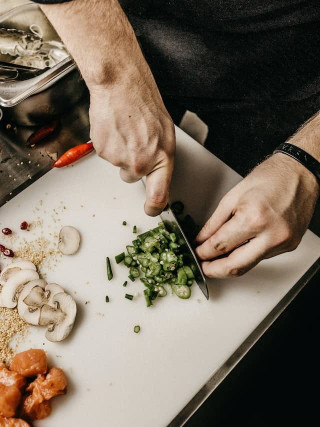
Once you have harvested your Lion's Mane mushrooms, it's time to cook and enjoy them! Various cooking methods can highlight its unique flavor. For example, you can pan-sear or roast it, or incorporate it into dishes like risotto, pasta, or soups. The taste of Lion's Mane is so delicious that it will surely elevate any dish it is added to.
To further enhance your experience with this mushroom, refer to the table below for some tips on how best to cook and enjoy your Lion's Mane:
| Cooking Method | Preparation |
|---|---|
| Pan-searing | Cut into thick slices and sear in hot oil or butter until golden brown |
| Roasting | Cut into bite-sized pieces and toss with olive oil, salt, and pepper. Roast in a preheated oven at 400°F for 20-30 minutes |
| Risotto | Sauté chopped onion in butter until translucent. Add Arborio rice and stir until coated with butter. Pour in white wine and chicken broth slowly while stirring constantly until the rice is cooked through but still al dente. Stir in grated Parmesan cheese and finely chopped Lion's Mane mushroom before serving |
| Soup | Sauté diced onion in butter until softened then add finely chopped garlic cloves and sauté for another minute. Pour in chicken broth along with cubed potatoes and finely sliced carrots then bring everything up to a boil before lowering the heat down again so the soup simmers gently away until potatoes are tender. Add finely sliced Lion's Mane mushroom and cook for another 5-7 minutes before turning off the heat and serving hot |
Incorporating Lion's Mane into your meals not only adds a unique flavor but also provides potential health benefits. In the next section, we will explore how this mushroom can be a nutritional powerhouse.
Lion's Mane Mushroom: A Nutritional Powerhouse with Potential Health Benefits
Discover the amazing nutritional benefits and potential health advantages of adding Lion's Mane mushrooms to your diet. Not only do they have a unique taste and texture, but they also contain an impressive array of nutrients that can positively impact your overall health. Here is a breakdown of the nutritional benefits you can expect from incorporating Lion's Mane into your meals:

| Nutrient | Amount per 100g | % Daily Value |
|---|---|---|
| Protein | 20g | 40% |
| Potassium | 1,106mg | 24% |
| Vitamin B12 | 1.7mcg | 71% |
| Zinc | 3mg | 27% |
| Niacin (B3) | 14mg | 88% |
As you can see, Lion's Mane mushrooms are a nutritional powerhouse. They are particularly high in protein, making them an excellent choice for vegetarians and vegans looking to boost their intake. Additionally, they contain significant amounts of potassium, which is vital for maintaining healthy blood pressure levels.
But the benefits don't stop there! Research suggests that Lion's Mane may also have therapeutic properties that could improve cognitive function and promote nerve regeneration. Furthermore, studies have shown that these mushrooms possess anti-inflammatory properties that may help support immune function.
So not only are Lion's Mane mushrooms delicious and nutritious, but they may also provide significant health benefits. Incorporating them into your diet is easy with our guide on growing Lions Mane at home!
Now that you know about the incredible nutritional benefits of this mushroom variety, let's explore how to grow it in the comfort of your own home!
Conclusion: Celebrating the Benefits and Joys of Home-Grown Lion's Mane Mushroom
Indulging in the rich and unique flavor of home-grown Lion's Mane mushrooms while reaping their numerous health benefits is a celebration that every mushroom lover should experience. If you're new to growing mushrooms, fear not! With patience and diligence, you can successfully grow Lion's Mane at home. Here are some tips to help you get started:

- Start with a reliable spawn source: You can either purchase a ready to grow kit or use mane grain spawn to inoculate your substrate of choice. The latter option requires more time and effort but gives you more control over the process.
- Choose the right substrate: Lion's Mane grows well on hardwood sawdust, supplemented with bran or other nitrogen-rich ingredients. You can also use straw or coffee grounds as a substrate, but they require pasteurization or sterilization before use.
- Create optimal growing conditions: Lion's Mane prefers cooler temperatures (around 60-70°F) and high humidity (80-90%). You can achieve this by using a humidifier, misting your mushroom bag regularly, or placing it in a humid environment like a greenhouse.
Growing Lion's Mane at home offers many benefits beyond just the joy of harvesting fresh mushrooms. By cultivating your own fungi, you have better control over their quality and purity than buying from an unknown source. Additionally, Lion's Mane is packed with nutrients that support brain function and may even have anti-inflammatory properties.
But perhaps the most rewarding part of growing your own mushrooms is witnessing their growth from tiny mycelium to fully-formed fruiting bodies. It's truly magical to see nature at work in your own home. Don't be afraid to experiment with different techniques and substrates – each attempt brings its learning opportunities and rewards in the form of delicious mushrooms for your plate!
Shop Now and Harvest Fresh Lion's Mane Mushrooms at Home
Looking to grow Lion's Mane mushrooms at home? Visit FunGuy Grow Supply for top-quality mushroom growing supplies including mushroom grow kits, premium grain spawn, and all in one mushroom grow bags. Get everything you need to start growing your own Lion's Mane mushrooms at home.
Frequently Asked Questions

How long does it take for Lion's Mane mushrooms to grow?
It typically takes between 4-6 weeks for lion's mane mushrooms to grow from spores to mature fruiting bodies. This time frame can vary based on factors such as temperature, humidity, and proper care.
In the initial stage, you'll need to ensure that the substrate is fully colonized by the mycelium before moving it into a fruiting chamber. Once in the fruiting chamber, you'll need to maintain ideal conditions for growth, including proper lighting, ventilation, and moisture levels.
As your mushrooms begin to grow, they will undergo several stages of development before reaching maturity. With patience and attention to detail throughout the process, you can successfully cultivate this unique and delicious mushroom at home.
Can Lion's Mane mushrooms be grown in a humid climate?
Yes, lion's mane mushrooms can be grown in a humid climate. However, it's important to note that humidity levels should be kept between 75-85% and temperatures at around 68-72°F for optimal growth. It's also recommended to provide good ventilation and air circulation to prevent the growth of mold or other contaminants.
Growing lion's mane mushrooms in a humid environment may require more attention to moisture levels because excessive moisture could lead to bacterial or fungal growth. It's crucial to follow proper sterilization techniques and maintain clean conditions throughout the growing process to achieve healthy and high-quality yields.
Is it safe to eat Lion's Mane mushrooms raw?
It's generally safe to eat lion's mane mushrooms raw, but there are a few things to keep in mind.
First, make sure the mushroom is fresh and free of any mold or signs of decay.
Second, some people may experience mild digestive discomfort when consuming raw lion's mane mushrooms due to their high fiber content. If you're concerned about this, try cooking the mushroom first to break down some of the fibers.
Finally, it's worth noting that there have been very rare cases of people having allergic reactions to lion's mane mushrooms. If you've never eaten them before, start with a small amount and monitor your body's response before eating more.
Can Lion's Mane mushrooms be grown in a small apartment?
You might be surprised to learn that lion's mane mushrooms can actually be grown in a small apartment! With the right tools and techniques, you can cultivate these delicious fungi right in the comfort of your own home.
All you need is a small space where you can set up your growing operation, some mushroom spawn (which you can purchase online), and a substrate material such as sawdust or straw.
With careful monitoring of temperature and humidity levels, along with proper ventilation and lighting, you'll soon have a bountiful harvest of fresh lion's mane mushrooms ready to enjoy!
How do I know when it's time to harvest my Lion's Mane mushrooms?
When it comes to harvesting your lion's mane mushrooms, timing is key. You should wait until the fruiting bodies are fully formed and have reached their maximum size before picking them. This typically takes around 7-10 days after they first appear.
To determine if they're ready, check for a firm texture and a white or creamy color. If the edges start to turn brown or curl up, it's a sign that they've become overripe and you may want to harvest them immediately.
Using sharp scissors or a knife, cut the mushroom off at the base of its stem and avoid pulling it out by hand as this can damage the mycelium underneath and impact future growth.
References
- Chang, S. T., & Wasser, S. P. (2012). The role of culinary-medicinal mushrooms on human welfare with a pyramid model for human health. International journal of medicinal mushrooms, 14(2), 95–134. https://doi.org/10.1615/intjmedmushr.v14.i2.10
- Han, Z. H., Ye, J. M., & Wang, G. F. (2013). Evaluation of in vivo antioxidant activity of Hericium erinaceus polysaccharides. International journal of biological macromolecules, 52, 66–71. https://doi.org/10.1016/j.ijbiomac.2012.09.009
- Khan, M. A., Tania, M., Liu, R., & Rahman, M. M. (2013). Hericium erinaceus: an edible mushroom with medicinal values. Journal of complementary & integrative medicine, 10, https://doi.org/10.1515/jcim-2013-0001

